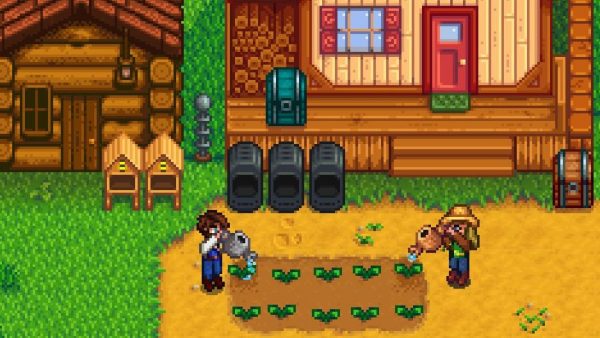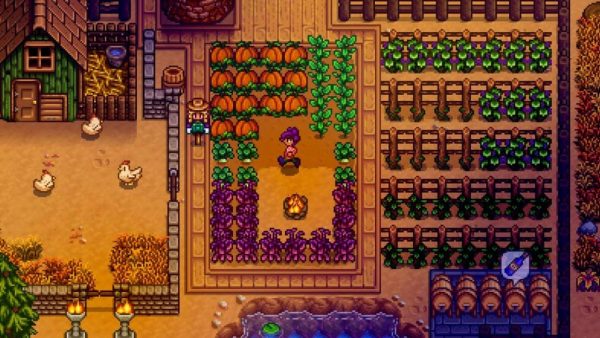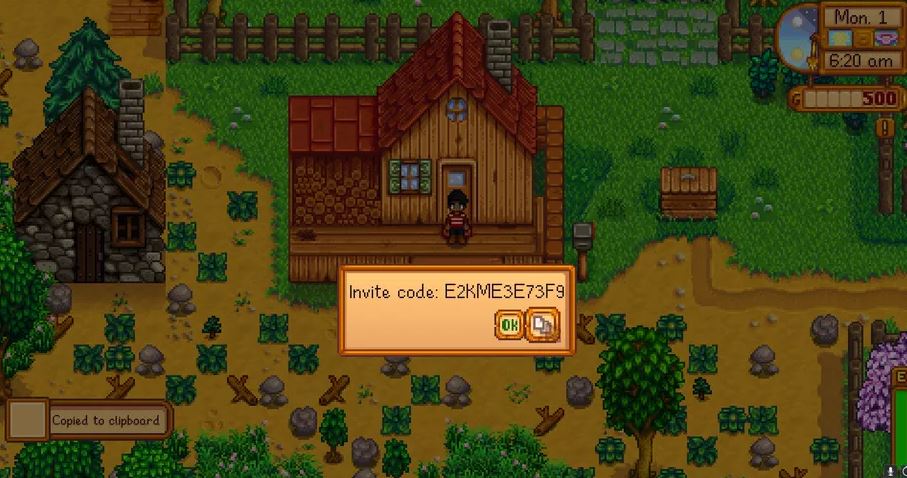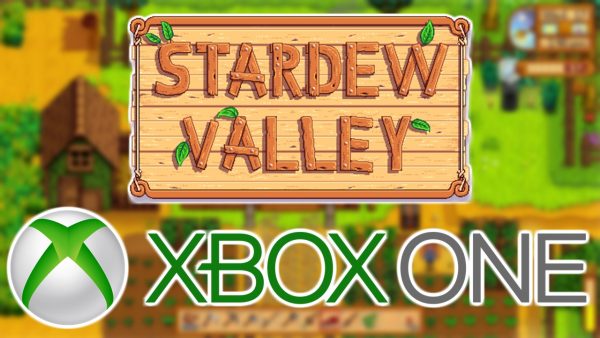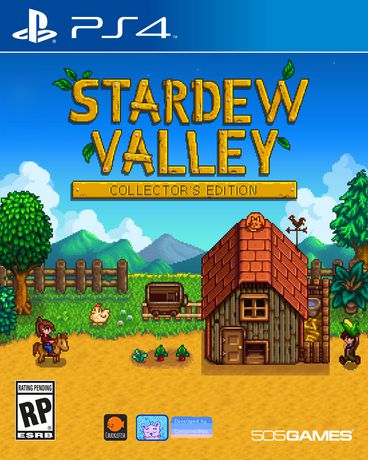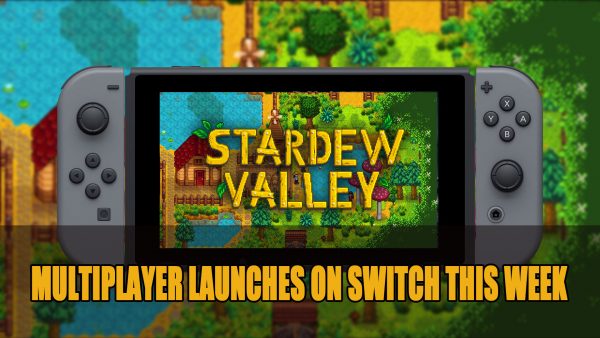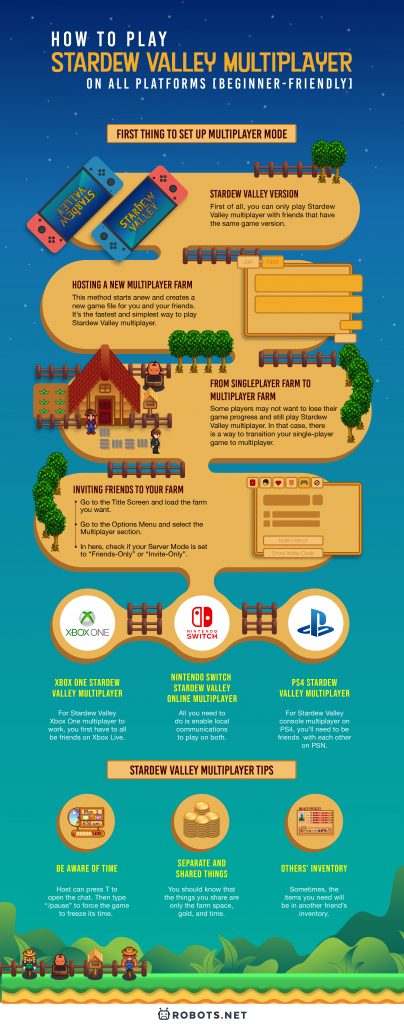You might be new to Stardew Valley and are curious about how multiplayer works. In this article, we’ll guide you on how to start your farm with a friend plus a few multiplayer pointers. Once you’re through reading, you’ll know how to play Stardew Valley multiplayer on all platforms.
Ways to Set Up Multiplayer Mode
There are two ways to set up Stardew Valley multiplayer. The first one is to set up an entirely new multiplayer game with multiple cabins. You get to play with friends right away, but you have to start from scratch. Alternatively, if you don’t want to start a new game, you can transition from single player to multiplayer. This makes it easy to preserve your progress while still adding new friends to the game.
Checking Stardew Valley Version
First of all, you can only play Stardew Valley multiplayer with friends that have the same game version. Learning how to access Stardew Valley multiplayer is useless if you don’t have the same version. To check your game version, click on the question mark icon (?) on the Title Screen. It should be in the bottom-right corner of the screen. Make sure you and all your friends are up to date.
Hosting a New Multiplayer Farm
First, let’s talk about how to host Stardew Valley multiplayer overall. This method starts anew and creates a new game file for you and your friends. It’s the fastest and simplest way to play Stardew Valley multiplayer. However, do note that this method will reset your progress. You won’t be able to access any of your advanced skills or resources. If you’re alright with that, then this method is ideal. How does Stardew Valley multiplayer work? It’s pretty simple, really. Stardew Valley multiplayer relies on cabins. You can have up to three cabins, one for each player. That means the limit to Stardew Valley multiplayer is four players. To start, all you need to do is go to the main menu and set this up. To host a new Stardew Valley multiplayer game, do the following steps:
Moving From Single-Player Farm to Multiplayer Farm
Some players may not want to lose their game progress and still play Stardew Valley multiplayer. In that case, there is a way to transition your single-player game to multiplayer. As previously mentioned, Stardew Valley multiplayer relies on cabin farm buildings. In a single-player game, you can purchase these things from Robin. It’s easy to make and it’s affordable. However, the maximum is still three cabins per game. To turn your single player to multiplayer, do the following steps:
Inviting Friends to Your Farm
Inviting friends doesn’t just mean you chat them up and invite them. There’s also a process to start this new Stardew Valley friendship. Let’s learn about how to join a multiplayer game. First, you have to know that there are currently no plans to make Stardew Valley crossplay a reality. So, if you were planning on playing with friends on different platforms, you’re out of luck. However, PC players via Steam and GOG do have a bit of crossplay capability among themselves. That’s because both are on the PC. As for the consoles, it looks like you’ll have to stick with fellow same-console users for Stardew Valley multiplayer. If you want to invite your fellow Stardew Valley multiplayer users to your farm, do the following steps:
Possible Obstacles
If you find that Stardew Valley Multiplayer doesn’t work, try disabling firewalls and anti-viruses. These things can stop your game from online communication so they might be a hindrance. If you temporarily disable them or set an exception for Stardew Valley, this may solve the problem. However, if it doesn’t work, check your OS or your router. They might have built-in firewalls that may also block Stardew Valley. As a word of caution: note that disabling firewalls or anti-viruses may endanger your system. Proceed carefully.
Stardew Valley Multiplayer on Every Platform
Xbox One Stardew Valley Multiplayer
For Stardew Valley Xbox One multiplayer to work, you first have to all be friends on Xbox Live. You and your friends also all have to have Xbox Live Gold. This won’t work otherwise. The process of hosting and joining on Xbox One is the same as PC.
PS4 Stardew Valley Multiplayer
For Stardew Valley console multiplayer on PS4, you’ll need to be friends with each other on PSN. Once you’re friends, you can connect to each others’ games. However, PlayStation Plus is required for this to work. The process for hosting or joining on PlayStation is the same as the PC.
Nintendo Switch Online Stardew Valley Multiplayer
If you want to play Stardew Valley multiplayer on Switch, you first have to be friends with each other, too. You can join your friends’ farms via the join screen this way. However, you will need a Nintendo Switch Online membership for this to work. The process of hosting and joining the Stardew Valley multiplayer on Switch is the same as it is on PC.
Nintendo Switch Local Multiplayer
If you don’t want to register to Switch Online, there’s also a way to play Stardew Valley multiplayer locally. You can play if there are two Nintendo Switch consoles within your household. All you need to do is enable local communications to play on both. Then, you’ll be able to play multiplayer without a membership.
Console Troubleshooting
Checking NAT Type
Sometimes consoles have trouble communicating with each other. Once this happens, you should check out your NAT type. This shows your console’s capability in how it communicates with other online systems. Most major consoles will give you a way to test your NAT type. If you want to check your NAT Type on each platform, check the following links:
Nintendo Switch Xbox One PS4
If you’re the host of a console multiplayer, you will require a more open NAT type. That is NAT Open, NAT Type A, or NAT Type 1. NATs such as Strict NAT, NAT Type C, or NAT Type 3 won’t do. They may block your connection with other players. If you want to make your NAT type more open, you should set up a DMZ or forward ports.
DMZ or Port Forwarding
Router settings may need modification if you’re having trouble connecting to another person’s game. You will have to redirect the router so that Stardew Valley data will be routed to the device running it. However, you will have to activate DMZ on your router or set up port-forwarding. There’s no one-size-fits-all process to this as it will vary depending on ISP and router hardware. You’ll have to check the manual to learn how to set this up. Also, be aware that modifications to port forwarding and DMZ may affect your network. Stardew Valley will require the following ports for smooth gameplay: PC:
TCP/UDP: 24642
Xbox One:
TCP: 3074, 53, 80 UDP: 88, 3074, 53, 500, 3544, 4500
PS4:
TCP: 80, 443, 3478, 3479, 3480 UDP: 3478, 3479
Nintendo Switch:
UDP: 1-65535
Once you’ve set up the proper DMZ or port-forwarding, you should access others’ games smoothly. Make sure to proceed with caution and consult your manual before tampering with anything, though.
Things to Note About Multiplayer Gaming
Before you start your Stardew Valley multiplayer game, there are a few things you should note. First, story progress will be shared among all players. However, inventories, relationships, and other achievements are individually achieved. There’s also the addition of a new chatbox in-game for easy communication. Second, the host of the created world will possess the save file. Whether it’s in console or PC, their system will have the save file within it. The host is also the only one who can launch it in multiplayer mode. If the host isn’t online, other players won’t be able to access the joint world. Furthermore, if the host doesn’t open the farm to other players, the joint world will also be inaccessible. However, if the host chooses to play the joint world alone, they may do so. This host ownership is non-transferable unless you employ a mod. So, make sure to choose the host from among yourselves carefully. Third, all friends who want to join a joint farm need to have a copy of Stardew Valley. Otherwise, they won’t be able to join or play multiplayer. Split-screen isn’t supported on any platform.
Stardew Valley Multiplayer Tips
The multiplayer experience is different from the single-player experience. Adding friends to the mix within Stardew Valley increases its difficulty and fun at the same time. However, the changes can be a bit jarring for some players. Here are some things to keep in mind once you’ve started your Stardew Valley multiplayer world.
Separate and Shared Things
First off, you should know that the things you share are only the farm space, gold, and time. However, inventory, skill level, energy, and relationships will all remain separate.
Be Aware of Time
Time is especially of note. In single-player mode, you might be used to the clock stopping when you’re organizing inventory. That won’t be the case in Stardew Valley multiplayer, though. Be aware that going inside a menu or a store won’t stop any time. You might not finish your tasks before the sun sets since time flies much more quickly. It’s a new kind of challenge that you should think about how to approach. In a way, it adds a bit of realism since real-life time stops for nothing and no one, too. However, if everyone really wants to freeze time, the host can press T to open the chat. Then type “/pause” to force the game to freeze its time. This can be handy when everyone wants to take a break.
Others’ Inventory
Sometimes, the items you need will be in another friend’s inventory. What do you do if that friend logs off, then? Well, Stardew Valley multiplayer allows you to peruse through their dresser. Just go to the cabin and find the things that you need. If you transitioned from a single-player game to multiplayer, all your friends will start off with base skills and resources. That means they won’t have the advanced tools or skills to do the work.
Final Word
Once you’ve set up your Stardew Valley multiplayer game, you’ll be drawn into a world that might seem new. You’re no longer alone and you can share many things with friends. It’s no surprise that many people opt for multiplayer considering how fun it can be. Even with the added difficulty of sharing time, the game becomes interesting when you have to think about shared spaces.
